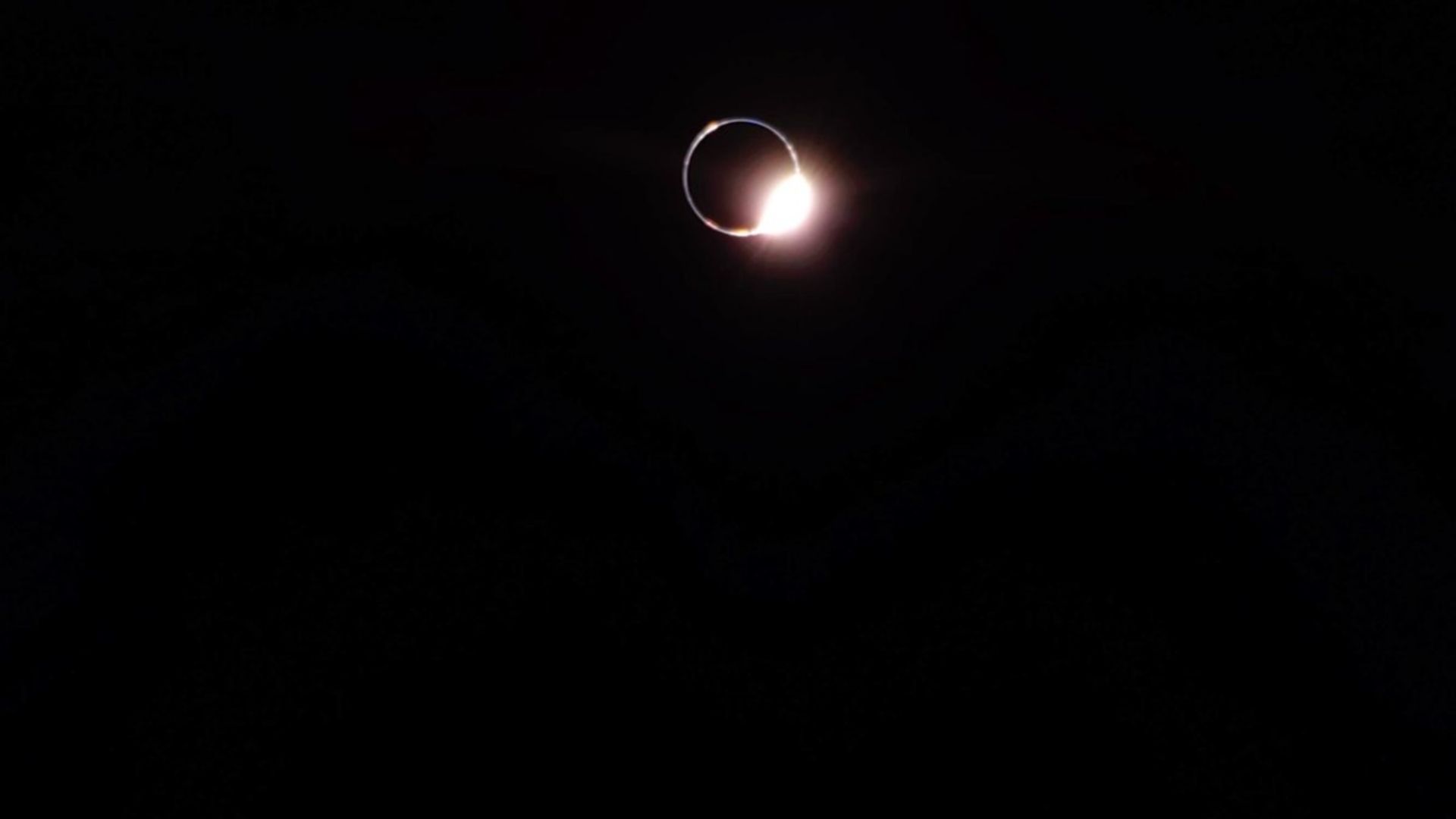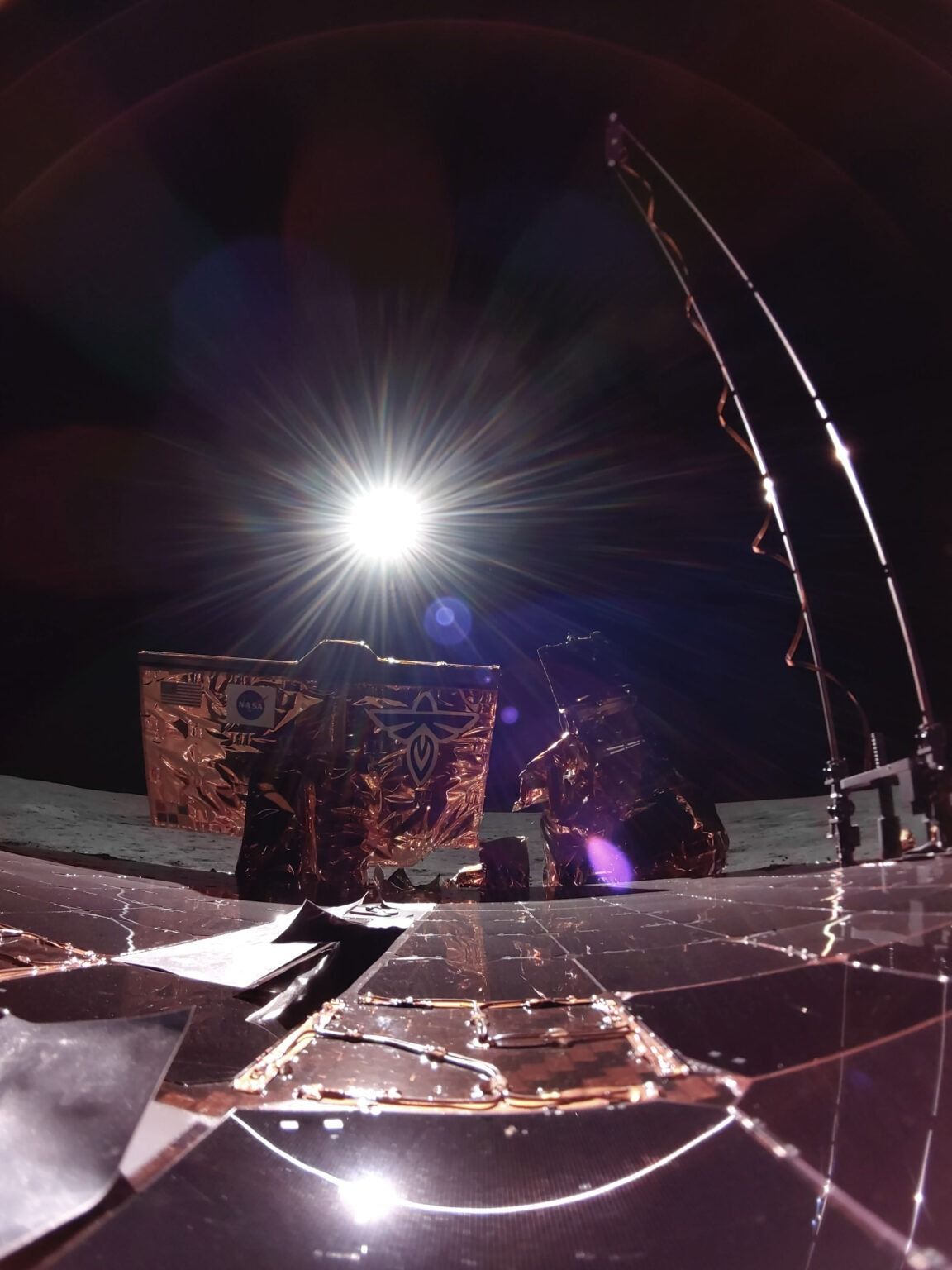Video: lunar eclipse seen from the Moon, when Earth blocks the Sun 🌕
Follow us on Google News (click on ☆)

A 'diamond ring' phenomenon observed by the Blue Ghost lunar probe from Firefly Aerospace during a total lunar eclipse on March 14, 2025.
Credit: Firefly Aerospace
During the recent total lunar eclipse, the Blue Ghost lunar probe immortalized the moment when Earth blocked the Sun, creating a ring of light around our planet. This event, known as the 'diamond ring,' was captured with remarkable precision. The probe, which landed on the Moon on March 2, thus offers a unique perspective on these astronomical phenomena.
Firefly Aerospace emphasized the importance of this mission, marking a historic first for a private company operating on the Moon. The images and videos sent by Blue Ghost enrich our understanding of eclipses and lunar conditions. These data are valuable for scientists and astronomy enthusiasts.
Lunar and solar eclipses offer unique spectacles, visible from both Earth and the Moon. Blue Ghost has enabled the capture of these moments from an unprecedented angle, enriching our knowledge of the interactions between Earth, the Moon, and the Sun. These observations contribute to the study of astronomical phenomena and the preparation of future lunar missions.
These images are not just technological feats; they open new perspectives for space exploration. The Blue Ghost mission illustrates the potential of private companies in lunar exploration, providing valuable tools for scientific research and future explorations.
What is a total lunar eclipse?
A total lunar eclipse occurs when Earth is directly between the Sun and the Moon, casting its shadow on the Moon. This phenomenon can only occur during a full moon, when the three celestial bodies are aligned.
During the eclipse, the Moon can take on a reddish hue, known as a 'blood moon.' This coloration is due to the refraction of sunlight through Earth's atmosphere, which filters out blue wavelengths and allows red ones to pass through.
Total lunar eclipses are rare and spectacular events, offering a unique opportunity to study the characteristics of Earth's atmosphere and the properties of the lunar surface. They are also privileged moments for astronomical observations and scientific studies.
How do lunar probes like Blue Ghost contribute to science?
Lunar probes, such as Blue Ghost, play a crucial role in the exploration and study of the Moon. They allow for the collection of precise data on the lunar surface, its tenuous atmosphere, and the astronomical phenomena that occur there.

The Blue Ghost probe from Firefly Aerospace captures a solar eclipse seen from the Moon on March 14, 2025. On Earth, we observed a lunar eclipse.
Credit: Firefly Aerospace
These missions provide high-quality images and videos, offering unique perspectives on events like eclipses. They also contribute to the preparation of future manned missions by mapping potential landing zones and studying lunar resources.
Finally, lunar probes are valuable tools for the international scientific community, enabling a better understanding of the Moon's history and evolution, as well as its interaction with Earth and the Sun.